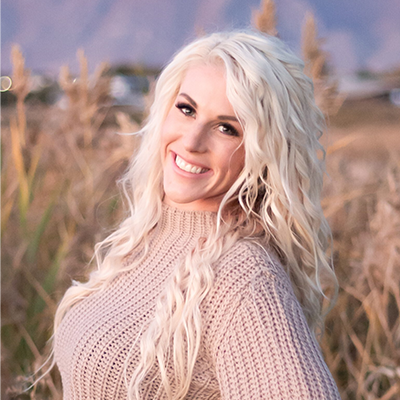For many ranchers in the Western United States, the spring calving season is either quickly approaching or already well underway. While this is an exciting time for your operation, it can also be stressful, but the best way to handle pre-calving jitters is with proper preparation. Redd Summit Advisors has compiled a list of key areas of preparation to consider to keep any calving season chaos at bay.
Pregnant Cow and Heifer Nutrition Needs
A pregnant cow or heifer’s body condition score (BCS) going into calving affects her stamina during delivery, colostrum quality, calf vigor, and rebreeding success. According to the University of Nebraska-Lincoln, cows with a BCS of 4 or thinner produce less colostrum and give birth to calves that are slower to stand, while cows with a BCS average of 3 or 4 have difficulty exhibiting their first heat by 80 days after calving, therefore hindering the opportunity to maintain a 365-day calving interval. A BCS of 5-6 tends to be ideal while feeding to a BCS of 7 or above is not economical and can cause dystocia issues at calving.
Although it’s important to keep a close eye on the BCS for all of your cows prior to calving, first-calf heifers are the most vulnerable to nutritional deficiencies, as they’re still growing themselves along with their fetal calf. The increased energy demands of your pregnant herd are also often compounded by cold conditions, low forage availability, and limited space in the rumen as the fetal calf takes up more space in the abdominal cavity. If feasible, feeding a high concentrate grain diet may be necessary to maintain a good BCS and avoid calving and rebreeding complications. Visiting with your nutritionist is a great idea here to help determine an appropriate level of supplementation that will achieve the desired BCS without spending too much money on wasted feed.
Along with energy demands, pregnant cows require extra attention to the following micronutrients prior to calving and during lactation:
Copper
Copper intake has significant effects on immunity and reproduction. Copper is necessary for the development of antibodies, white blood cells, and antioxidant enzyme production, which are all crucial for fighting infection and aiding in vaccine response.
Copper-deficient cattle tend to be less resistant to parasites, posing a management risk to your operation. It has also been found that copper-deficient cattle have reduced reproductive efficiency and lower-quality colostrum, while their calves tend to have reduced growth, reduced immunity, and poor production efficiency.
Zinc
Proper intake of Zinc is necessary for normal reproductive performance in cattle. Because Zinc is involved in a variety of enzyme systems, as well as protein synthesis, carbohydrate metabolism, and other biochemical reactions, a Zinc deficiency will have a vast array of pathological effects including skin parakeratosis, reduced or cessation of growth, and increased susceptibility to infection. Zinc-deficient calves have also been found to grow more slowly than non-deficient calves even when fed at the same rate.
Manganese
Manganese is required for the proper skeletal development of calves, as well as reproductive performance in cattle. Calves born to cows with a manganese deficiency tend to be lighter than non-deficient calves and suffer from a variety of other ailments including parrot mouth, unsteadiness, disproportionate dwarfism, and swollen joints. Research has shown that supplementing cattle with up to 50mg of manganese for every kg of dry matter being fed is enough to overcome any sign of deficiency.
Vitamin A
During the winter months, and especially as we endure the drought, Vitamin A intake for your herd requires extra attention. Where cattle can normally source adequate amounts of Vitamin A’s precursor, beta-carotene, from green vegetation in pastures, they’re now limited to the amount found in certain feeds and hays which is typically not very stable. Without proper supplementation, Vitamin A-deficient cows tend to exhibit reduced feed intake, reduced growth, night blindness, edema, low conception rates, abortions, stillbirths, or weak calves. Likewise, calves deficient in Vitamin A typically have a weakened immune response to infection or other stressors.
Selenium & Vitamin E
Studies have shown that adequate selenium and vitamin E supplementation during late gestation results in improved quality and quantity of colostrum for pregnant cows, thereby benefiting their newborn calves. Supplementation has also been found to decrease the risk of retained fetal membranes and increase pregnancy rates, which helps to maintain your 365-day calving interval.
Review Your Herd Health Plan with your Veterinarian
The weeks and months leading up to calving season are the perfect time to review your past year’s records and identify critical control points (CCPs) where management can reduce risk during pregnancy and calving. Specifically, it’s a good idea to review your pre-calving vaccination plan with your veterinarian to reduce the risk of infection or disease among your herd and incoming newborn calves.
As we know, newborn calves receive passive immunity via colostrum from the dam, so pre-calving vaccinations of your pregnant herd help build those antibodies. However, choosing which vaccines to administer is more specific to your ranch, which is why it's vital to keep thorough records year after year. If you frequently struggle with enterotoxemia, then a clostridial vaccine should be on your books, whereas a scours-encompassing vaccine may be appropriate for other operations, while sometimes both are necessary. Some operations are also implementing BVD/IBR vaccines in their pre-calving vax plan.
In any case, the timing of your vaccines is important for them to be an effective management tool. Vaccines given too close to calving dates will not give the cow enough time to develop her own antibody response, let alone pass it on to her calf through colostrum. Many vets will recommend a minimum of 8 weeks before calving to administer prepartum vaccines.
It's also important to remember that vaccines will never make up for poor management. Pregnant cattle and newborn calves need a clean, dry environment as well as antibodies to significantly lower their risk of infection and disease.
Evaluate and Prep Your Calving Facilities and Supplies
Before calving season begins, inspect your pens, alleys, and head catches. Be sure to fix any broken or dysfunctional items. Keep in mind that good lighting in your calving barn is extremely important as well. Check your bulbs and have replacements on hand throughout the season. Now is also a great time to take stock of your calving supply inventory and ensure everything is in working order before the first calf is born. Some items to restock include colostrum replacement, palpation gloves, obstetrical lube and chains, esophageal feeders, feeding bottles, flashlights, spotlights, halters, and ropes, and ensure that your fetal extractor, or calf puller, is in working order. Lastly, ensure that your calving environment is clean and dry to minimize the risk of infection or disease, and have a plan to warm calves in cold weather.
Review the Stages of Parturition and Know When to Assist with Calving
Familiarity with the stages of parturition can make you all the more prepared to step in when a cow needs assistance. Take some time to review the signs of cervical dilation, delivery of the calf, and delivery of the placenta with yourself and your staff, and refresh your knowledge on how to correct abnormal presentations. However, it is important to know when a call to the veterinarian may be necessary if the level of assistance needed exceeds your or your staff’s experience.
Conclusion
The bottom line is that good calving season preparation comes down to good management all year round. Another calving season in the books of your operation signifies another year of growth and continued success, but that doesn’t mean it comes without stress. Thorough planning and prep work can help you eliminate common problem areas and run a smooth calving season on your ranch. For more information on livestock management, risk management, and agricultural insurance advisors visit the Redd Summit Advisors blog and be sure to subscribe to stay up to date when new resources are posted.





.webp)




